Bibliographies: primary sources
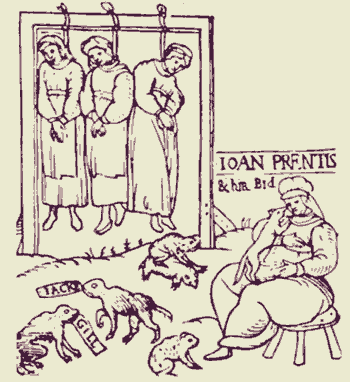
witches and familiars: the third Chelmsford pamphlet (1589)

In choosing a text or texts to work on, you should look for either a substantial text which you can read closely or for a group of slighter texts, such as trial pamphlets or accounts of demonic possession, which you can compare and contrast. You may choose to examine a single work on witchcraft or possession, in the context of a debate or of the writer's other works, in which case you should ask for guidance on how to locate relevant primary material, amid which you can position your chosen text.
The contemporary texts have been listed chronologically, by date of publication, to help you identify texts for comparison and other primary texts that may help you to contextualize your chosen material. You will also need to identify any relevant scholarly work on your chosen texts, and consult secondary sources for the general context. If you need help with this task, do ask in good time.
The following are guides to holdings of primary sources on witchcraft and the occult in the Notre Dame library:
Contemporary English printed sources
Contemporary Scottish printed sources
Contemporary New England printed sources
Contemporary translations into English
Modern editions of printed sources
SOME SHORT AND MEDIUM-LENGTH PAMPHLETS, ON THIS SITE:
Francis Coxe, A Short Treatise declaringe the detestable wickednesse of magicall sciences, as Necromancie, Conjurations of spirites, Curiouse Astrologie and suche lyke (1561) a former magician calls others to repentance, citing the notorious ends of Roger Bacon and Agrippa von Nettesheim
The Wonderful Discoverie of the Witchcrafts of Margaret and Phillip Flower (1619) a case wherein the Earl of Rutland, with his brother, investigated the death of his own son; village witchcraft beliefs are thus interacting with the aristocracy; the introduction is a good example of the intertextual character of English witchcraft pamphlets; article on this case by P.J. O'Connor, "Witchcraft pamphlets in Renaissance England: a particular case in which the tale was told", Midwest Quarterly 37 (1996) 215-227 AS 30 .M629
The Lawes against
Witches, and Conjuration, and Some brief Notes and Observations for the
Discovery of Witches...also The Confession of Mother Lakeland, who was
arraigned and condemned for a Witch,
at Ipswich in
Suffolke (1645) central section consists of brief rules for identifying
witches and victims; case unusual as Mother Lakeland, a previously respectable
woman, was burned for killing her husband
Confessions of witches at Faversham, Kent, in 1645; on Kent, see Malcolm Gaskill, "Witchcraft in early modern Kent: stereotypes and the background to accusations", in Jonathan Barry et al., Witchcraft in Early Modern Europe (Cambridge, 1996) 257-287. cf. also the next item.
The Chelmsford
mass trial of 1645, a detailed confession and other material from the
Hopkins panic;
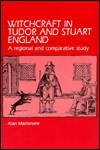
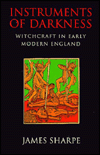 on
Essex witchcraft cases, see Alan Macfarlane, Witchcraft in Tudor and
Stuart England (London, 1970); on the Hopkins panic, see James Sharpe,
Instruments
of Darkness: Witchcraft in England, 1550-1750 (London, 1996) 128-145.
For confessions, see Diane Purkiss, The Witch in History (London,
1996) 145-176.
on
Essex witchcraft cases, see Alan Macfarlane, Witchcraft in Tudor and
Stuart England (London, 1970); on the Hopkins panic, see James Sharpe,
Instruments
of Darkness: Witchcraft in England, 1550-1750 (London, 1996) 128-145.
For confessions, see Diane Purkiss, The Witch in History (London,
1996) 145-176.
Matthew Hopkins, The Discovery of Witches ... (London, 1647) [PDF file]
Two pamphlets concerning Joan Peterson of Wapping (1652) a cunning woman, a conspiracy and an autopsy of the victim; more on this case in appendix to C. L'Estrange Ewen's Witch Hunting and Wutch Trials (1929)
The 1662 case of
the Lowestoft witches (1682 pamphlet) A famous case judged by
Sir Matthew Hale,
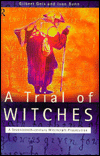
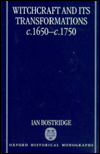 in
which the celebrated author of the Religio Medici, Thomas Browne
of Norwich, appeared as a medical witness; for a detailed though superficial
treatment of this case, see Gilbert Geis and Ivan Bunn, A Trial of Witches:
A Seventeenth-Century Witchcraft Prosecution (London, 1997); see my
critical
review, in Medical History 42 (1998) 544-5; also Ivan
Bunn's website on the case; for the political context, see Ian Bostridge,
Witchcraft
and Its Transformations, c.1650-c.1750 (Oxford, 1997). Matthew
Hale's notes on witchcraft, apparently written shortly after the case,
are available on microfilm. Both Hale and Browne have been the subject
of recent books and essays.
in
which the celebrated author of the Religio Medici, Thomas Browne
of Norwich, appeared as a medical witness; for a detailed though superficial
treatment of this case, see Gilbert Geis and Ivan Bunn, A Trial of Witches:
A Seventeenth-Century Witchcraft Prosecution (London, 1997); see my
critical
review, in Medical History 42 (1998) 544-5; also Ivan
Bunn's website on the case; for the political context, see Ian Bostridge,
Witchcraft
and Its Transformations, c.1650-c.1750 (Oxford, 1997). Matthew
Hale's notes on witchcraft, apparently written shortly after the case,
are available on microfilm. Both Hale and Browne have been the subject
of recent books and essays.
extract from Cotton Mather, Memorable Providences, Relating to Witchcrafts and Possessions (Boston, 1689) the case of the Goodwin children, an Irishwoman condemned to death, and their continuing affliction. This version is provided for convenience; for essay purposes, see the Evans microfiche of the Boston edition or the ESTC microfilm of the London edition. The role of providentialism in New England thought has been considered by several authors.
anon., The Impossibility of Witchcraft (1712), a sceptical intervention in the Jane Wenham debate, attacking a previous account. See the microfilms of other pamphlets; also Phyllis J.Guskin, "The Context of Witchcraft: The Case of Jane Wenham (1712)", Eighteenth-Century Studies 15 (1981) 48-71, and Ian Bostridge, Witchcraft and Its Transformations, c.1650-c.1750 (Oxford, 1997) 132-6. Also worth comparing with earlier sceptics such as Ady, Wagstaffe, or Webster.
The above pamphlets have been transcribed as faithfully as possible, although the italics have been omitted.
SOME SMALL ADDITIONAL ITEMS
Manuscript deposition of Thomas Knowlton against Rachel Clinton, Salem, Mass., 1687
A letter of Cotton
Mather, in the immediate aftermath of the Salem trials